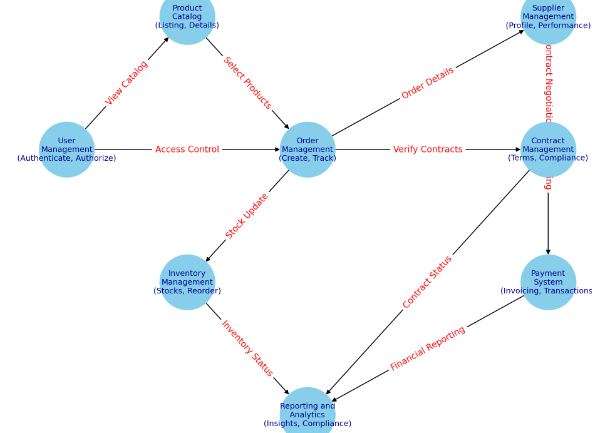
In Haiti, where corruption has long undermined economic growth and societal trust, the need for robust solutions is more pressing than ever. One promising avenue for combating these issues is the implementation of an electronic procurement (e-procurement) system. Government e-procurement websites facilitate the online procurement of goods and services by government entities. By digitizing and automating the procurement process, e-procurement promises to inject transparency and accountability into the heart of government dealings.
Here are some examples from various countries:
1. United States: SAM.gov (System for Award Management) – This is the official U.S. government system that consolidated the capabilities of CCR/FedReg, ORCA, and EPLS. It includes functionalities for all parties involved in federal procurement.
2. India: GeM (Government e-Marketplace) – GeM is a state-of-the-art public procurement platform for online procurement of common use goods and services required by various government departments, organizations, and public sector units in India. India introduced GeM to tackle corruption and to streamline government procurement of goods and services. The platform mandates transparency and competitive bidding, which helps to eliminate the previously common informal negotiations that could lead to corrupt practices.
3. United Kingdom: Contracts Finder – This website lets you search for information about contracts worth over £10,000 with the government and its agencies.
4. Australia: AusTender – AusTender provides centralized publication of Australian Government business opportunities, annual procurement plans, multi-use lists, and contracts awarded.
5. European Union: TED (Tenders Electronic Daily) – TED is the online version of the ‘Supplement to the Official Journal of the EU’, dedicated to European public procurement.
6. Canada: Buyandsell.gc.ca – This is the central procurement site for the Canadian government where all public procurement tenders are posted.
7. Brazil: ComprasNet – The Brazilian government’s purchasing portal, where all federal procurement processes are handled.
These platforms typically provide tools for both government agencies to post their procurement needs and for vendors to submit bids, ensuring a transparent and competitive procurement process.
Several countries around the world have implemented e-procurement systems specifically to address issues of corruption within their public procurement processes. These systems helped reduce opportunities for corrupt practices and ensure fairness in the bidding process. Here are a two notable examples:
- Georgia: Electronic Procurement System After extensive reforms in 2004, Georgia developed one of the most robust e-procurement systems, which has been crucial in combating corruption. This system is mandatory for all public procurement and is credited with drastically reducing corruption by ensuring transparency and competitive bidding.
- Ukraine: ProZorro Following the Maidan revolution in 2014, Ukraine implemented ProZorro, an award-winning transparent e-procurement system to combat endemic corruption. The system is unique for its openness, allowing not just buyers and sellers but also the general public to see all procurement data, thus making the entire process transparent and competitive.
These e-procurement systems represent significant steps toward reducing corruption in public procurement. By making the processes more transparent and reducing direct human control over each stage of the bidding and awarding process, these systems help curb corruption effectively.
The Need for Change:
Traditional procurement processes in Haiti often involve extensive paperwork, opaque decision-making, and limited public oversight, creating an environment ripe for corrupt practices. These practices not only drain resources but also discourage fair competition, limiting Haiti’s potential for economic development and eroding trust in public institutions.
The Role of E-Procurement:
E-procurement systems automate the procurement process, from tendering to awarding contracts, ensuring all transactions are transparent and traceable. This digital transformation is not unique to Haiti; countries around the world have seen significant improvements in governance through similar systems. For instance, countries like Estonia and South Korea have successfully used e-procurement to enhance public sector transparency and efficiency.
Benefits for Haiti:
The introduction of e-procurement in Haiti could revolutionize public administration in several ways:
– Increased Transparency: By making procurement data available and accessible in real-time, stakeholders can monitor and review government activities openly, reducing opportunities for corrupt practices.
– Enhanced Accountability: With a digital trail for every transaction, auditing and oversight become more straightforward, allowing for better enforcement of rules and regulations.
– Cost Reduction: Automating procurement processes reduces administrative costs and the time needed to process bids, translating into savings for the government and taxpayers alike.
– Improved Competition: A transparent system invites more bidders to participate in government tenders, improving the quality and cost-effectiveness of services and goods procured.
Challenges and Considerations:
While the benefits are compelling, a significant challenge must be addressed for e-procurement to succeed in Haiti:
– Cultural Shifts: Transitioning to a digital system requires significant changes in how government employees and suppliers conduct business. Training and education will be key.
Conclusion:
The potential of e-procurement to bring about significant reductions in corruption through enhanced transparency and accountability is immense. By fostering a fairer, more competitive procurement environment, Haiti can take a significant step toward sustainable economic and social development.
It is imperative for stakeholders, including government officials, business leaders, and international partners, to push forward with the necessary policy and technological frameworks that support the adoption of e-procurement. Let’s embrace this opportunity to transform Haiti’s public sector into a model of transparency and efficiency.
